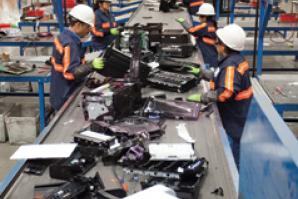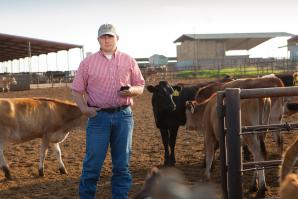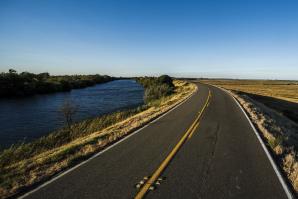
Tech Trash
How to dispose your out-of-date computers and e-waste
If your IT room is starting to look like a scene out of “Sanford and Son,” you’re not alone. In 2010, American consumers and businesses unloaded 40 million computers onto recyclers, landfills and the refurbished market, the Golisano Institute for Sustainability in Rochester, N.Y., reports. Some estimates show, however, that millions more are idling in homes and offices because owners simply don’t know what to do with them.

The Green Flash
There's energy in Solano's technology sector
An influx of green manufacturing companies and a burgeoning renewable-energy sector is creating the critical mass Solano County needs to usher in a new era of competitive economic growth.

Reap, Sow, Tweet
Branding ag through social media
“Good morning, Sacramento! It’s a perfect day for a pig roast. Come out and join us,” hog farmer Perrin Clark tweeted on a long-awaited day in May.
The Truck Stops Here
18-wheelers sacked by clean air cops
There is a squad of clean air cops in Sacramento with a
strong-arm approach that squashes the stereotype that
environmentalists are wimps. These officials make up the
enforcement branch of the California Air Resources Board, and
they face off against truckers still fuming over
emission-control rules they fear will put them out of business.

Power Brokers
Clean tech thrives in the Capital Region
Beutler Air Conditioning and Plumbing may be a poster-business for the rise and fall — and re-birth — of Sacramento’s economy. Rick Wylie, president of Beutler, says the 65-year-old Sacramento company was probably saved by its diversification, partially into green energy models.

Green for Green
Alternative financing for sustainable development
Developers looking to build in the Capital Region are finding cash in emerging green-financing products.
Super Charged
Changing opinions about energy efficient vehicles
If Rick Wylie were cast in a Chevy commercial, the director might pair him with a rugged pickup truck. It makes sense; Wylie worked his way up from sheet-metal apprentice to president of a construction company. In the real world, however, Wylie drives a Volt, pearl white with black trim.

Change of Plans
Regional conservation efforts battle dwindling budgets and staff
The future of community growth in the Capital Region hinges on the fate of several habitat conservation plans slogging through the development pipeline.

Current Affairs
Running the aquatic gauntlet of California's water politics
Long into early spring, hiking the rocky trail to Loch Leven Lakes required little more than a good pair of boots.

A Grower’s Eye
Acuity with Ronald Fong
Ronald Fong, 52, has served as president and CEO of the California Growers Association since 2008. The CGA is a nonprofit, statewide trade association representing more than 500 retail members operating 6,000 food stores and 200 supply companies in California and Nevada.


